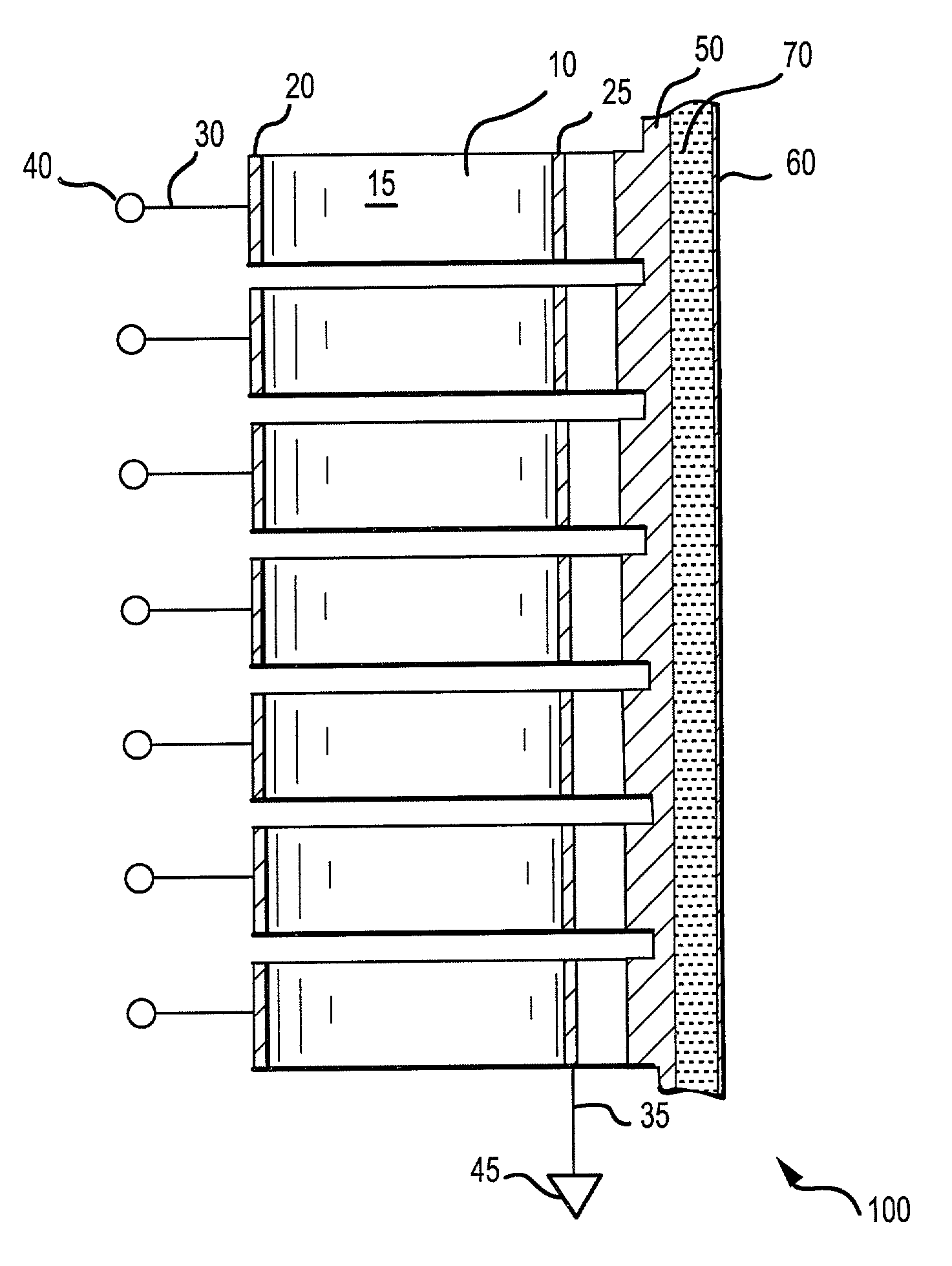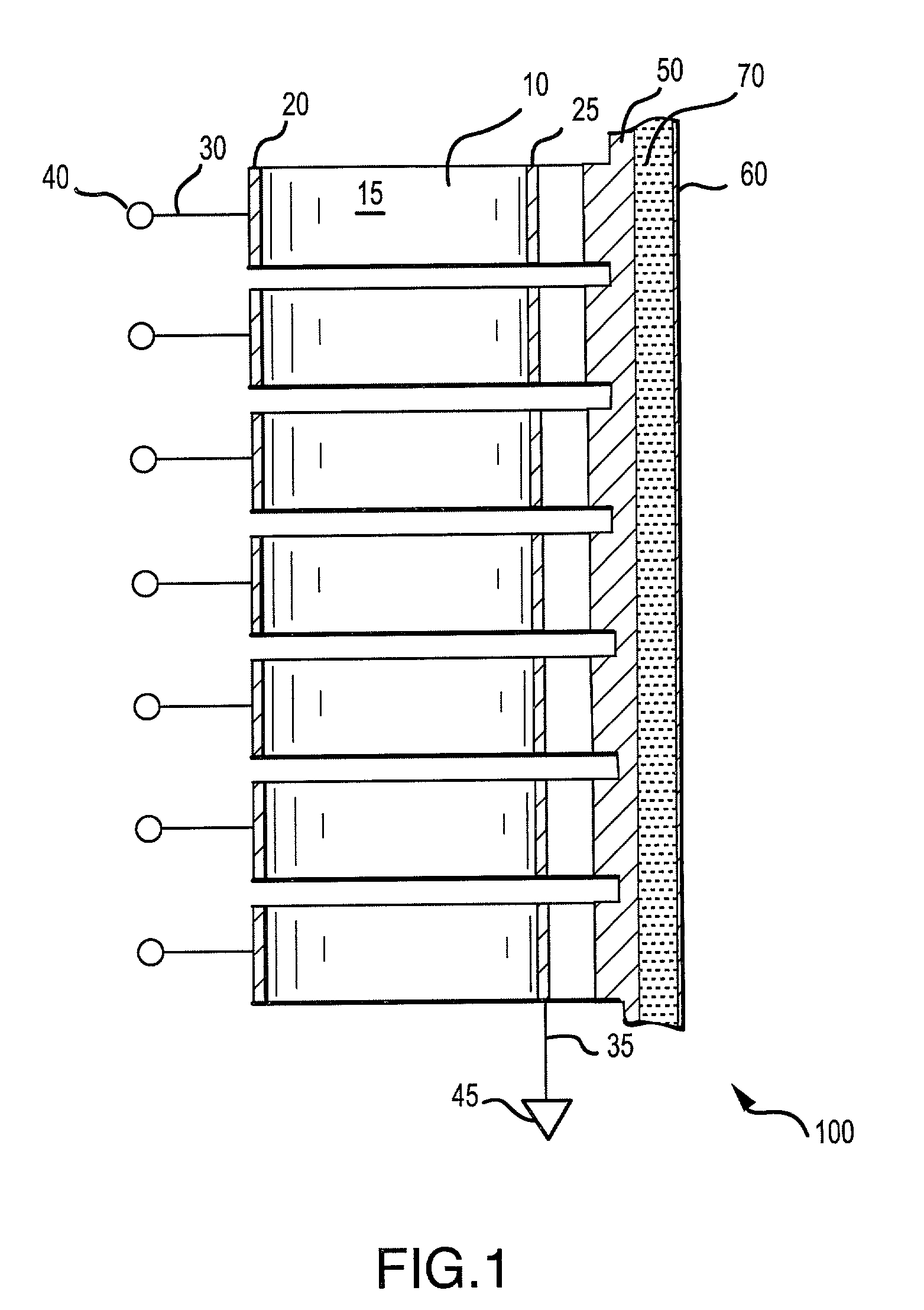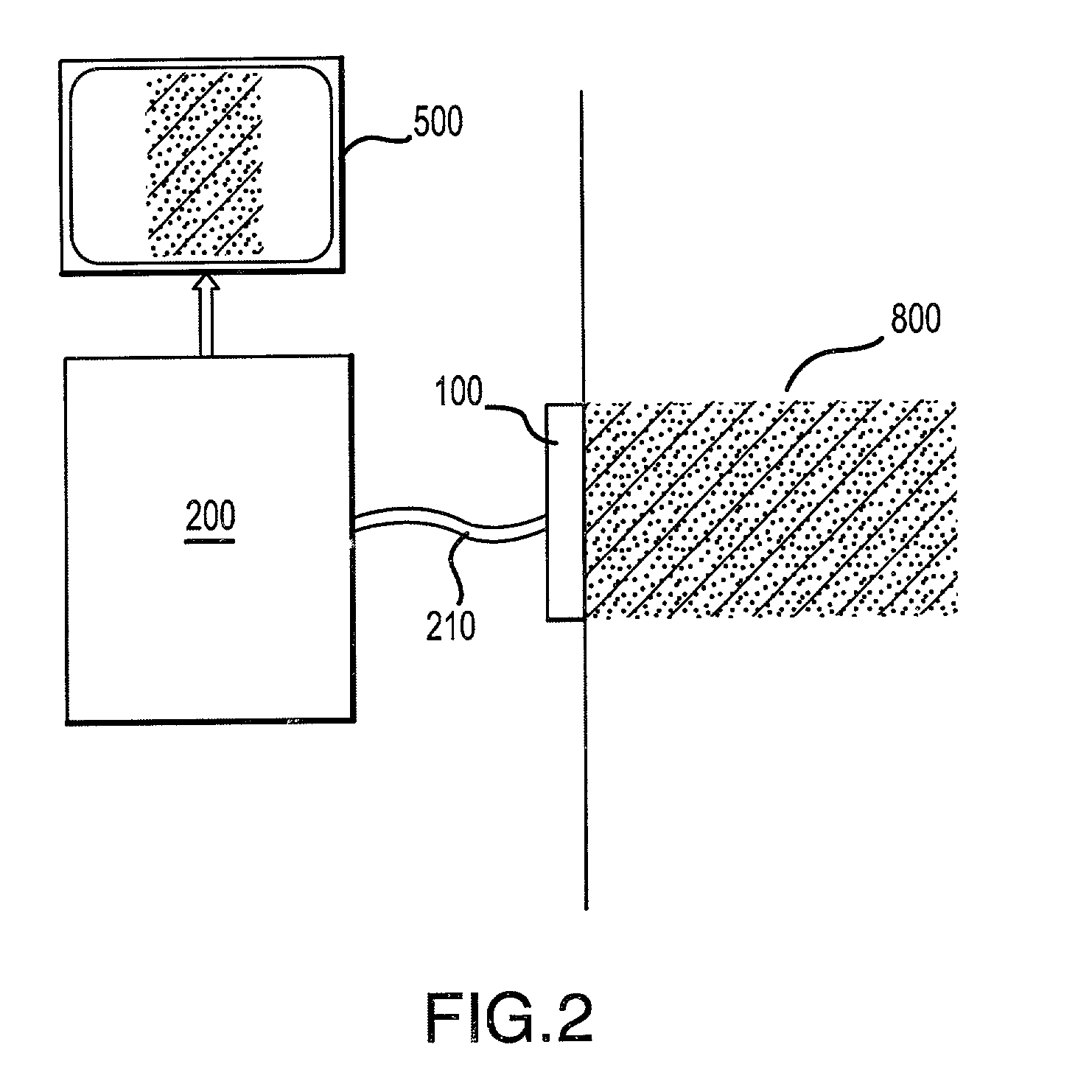Imaging, Therapy, and temperature monitoring ultrasonic system
a technology of ultrasonic system and temperature monitoring, applied in ultrasonic/sonic/infrasonic image/data processing, tomography, therapy, etc., can solve the problems of limited surface treatment or invasive procedures, poor control of energy deposition, and high absorption of tissue opacity and high absorption
- Summary
- Abstract
- Description
- Claims
- Application Information
AI Technical Summary
Problems solved by technology
Method used
Image
Examples
Embodiment Construction
[0039] A system for achieving successful ultrasonic therapy procedures in accordance with the present invention includes four major subsystems or components. Specifically, they are an acoustic transducer assembly, an imaging subsystem, a therapy subsystem (also referred to as a "therapeutic heating subsystem"), and a temperature monitoring subsystem, which are illustrated in FIGS. 1 through 4, respectively. Although not shown in the drawing figures, the system further includes components typically associated with a therapy system, such as any required power sources, memory requirements, system control electronics, and the like.
[0040] With reference to FIG. 1, the acoustic transducer assembly 100 included in the system of the present invention will be described in detail below. As shown in the cross-sectional view of FIG. 1, the acoustic transducer assembly 100 includes a piezoelectric ceramic plate 10. The air-backed side of the ceramic plate 10 is partially diced to have a pluralit...
PUM
 Login to View More
Login to View More Abstract
Description
Claims
Application Information
 Login to View More
Login to View More - R&D
- Intellectual Property
- Life Sciences
- Materials
- Tech Scout
- Unparalleled Data Quality
- Higher Quality Content
- 60% Fewer Hallucinations
Browse by: Latest US Patents, China's latest patents, Technical Efficacy Thesaurus, Application Domain, Technology Topic, Popular Technical Reports.
© 2025 PatSnap. All rights reserved.Legal|Privacy policy|Modern Slavery Act Transparency Statement|Sitemap|About US| Contact US: help@patsnap.com



